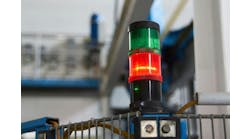[sidebar id =1]Shortly after undertaking their three-year, $3 billion capital improvement project in late 2014, engineers and managers at Total Petrochemicals & Refining USA Inc.'s Port Arthur refinery (PAR) realized they also needed to make alarm management more of a priority to avoid potential floods of unnecessary alarms.
"Our team reviewed PAR's existing alarm philosophy document (APD) written in 2009 to support the overall capital project, learned that remote operations had little or no input in it, and found the alarms weren't coordinated," said Randy Conley, supervisor of DCS, SIS and APC implementation at PAR. "So we established a core team, and called Honeywell Process Solutions and Missy Jones because they'd helped us with a similar APD project at another Total facility."
Conley and Jones, principal project engineer in the Advanced Solutions division at Honeywell, presented "Developing Your Alarm Philosophy Document" on the second day of Honeywell Users Group Americas 2016 in San Antonio, Texas.
The core team at PAR included:- Area operations superintendent as management representative;
- Operations project manager for process control experience;
- Process control supervisor;
- Process unit supervisor to help rationalize the first console; and
- Alarm coordinator for console operator set up.
Together, they and Jones began developing an alarm management roadmap, including cost, schedule and resources, for PAR's consoles, which would also require management approval. In all, this four-year project is rationalizing and managing alarms on 10 consoles at a cost of $2 million. Each of the consoles runs a distributed control system (DCS), which in turn manages many of the 120 PLCs and 40,000 I/O at the Port Arthur facility. Its 18 process units perform mainly refining for various fuels, though PAR is also integrated with an ethylene cracking unit.
Getting on the same page
After arriving onsite, Jones conducted three days of interviews and meetings with the core team and all of PAR's other players and stakeholders. "We had a big, core lunch-and-learn with about 50 people on the first day to explain our objectives and get stakeholder buy-in," reported Conley. "Next, we held separate, more detailed meetings with groups of related stakeholders to discuss different elements of the APD. Then, the core team circulated drafts, and held more meetings as required to engage stakeholders and get their agreement."
Conley added that PAR's 13 attendee categories included:
- Board operator;
- Shift supervisor;
- Operating supervision;
- Process support engineer;
- DCS alarm management;
- Process control supervisor;
- Operations management;
- Site management;
- Instrumentation department;
- Health, safety and environment (HSE);
- Other environment;
- Alarm management core team; and
- Other.
The 23 sections of the APD that all these participants contributed to and considered included:
- Introduction;
- Purpose of alarm system;
- Definitions;
- References;
- Roles and responsibilities;
- Alarm design principles;
- Alarm rationalization;
- Alarm class definition;
- Highly managed alarms;
- HMI design guidance;
- Prioritization method;
- Alarm limit determination;
- Alarm system performance monitoring
- Alarm system maintenance;
- Testing of the alarm system
- Advanced alarm management techniques;
- Alarm documentation;
- Implementation guidance;
- Management of change (MOC);
- Alarm system training;
- Alarm history preservation;
- Related site procedures; and
- Special alarm design considerations.
"Missy's site visit helped get us all up to speed, and then our meetings raised everyone's awareness, and got us all sharing," explained Conley. "It was hard to schedule all these meetings, and we didn't have perfect execution, but we got pretty close."
Thanks to all their gatherings and contributions, PAR's core team and participants successfully completed a draft and made three key modifications to their APD. They streamlined the refinery's alarm MOC, addressed alarm management for PAR's capital projects, began accumulating "typicals" with the first alarm rationalization, and identified and documented several classes of alarms.
For instance, the newly streamlined alarm MOC now includes:
- Operator initiates request from MOC shortcut;
- Supervisor pre-approves the request;
- Alarm coordinator completes form after discussing change with operator, and makes changes;
- HSE completes the send notice, and affected employees sign off; and
- Alarm coordinator closes the request.
"It's difficult to coordinate people and schedules, but we also worked with IT maintenance on some larger MOC issues, and developed a simple, one-page, drop-down form that is easy for users to complete and send to a supervisor," added Conley. "This is a 175,000 bpd refinery. We usually have about 100 active capital projects under development, and about 75% of those involve our DCS or alarms in some way. In addition, our project managers aren't very process-oriented and are usually more mechanically inclined, so we also worked with PAR's projects superintendent to come to an agreement that the APD would be given to all contractors, and that the alarm coordinator will attend process hazards analysis (PHA) and layers of protection analysis (LOPA) meetings to make sure the APD is followed. This approach will reduce ‘alarm inflation’ that can come from new projects.
"We just want to get rid of the alarm floods that typically happen whenever there's a plant hiccup."





